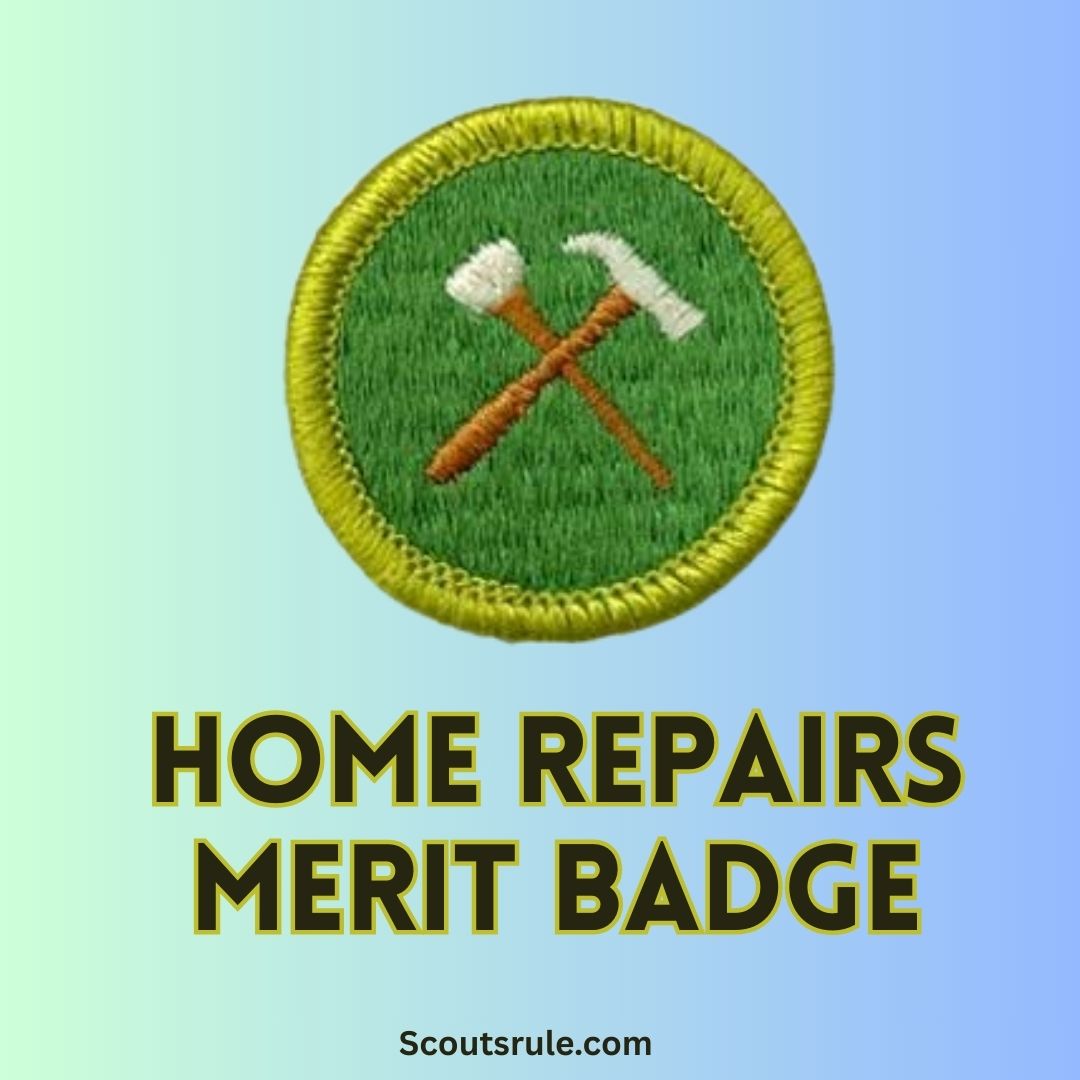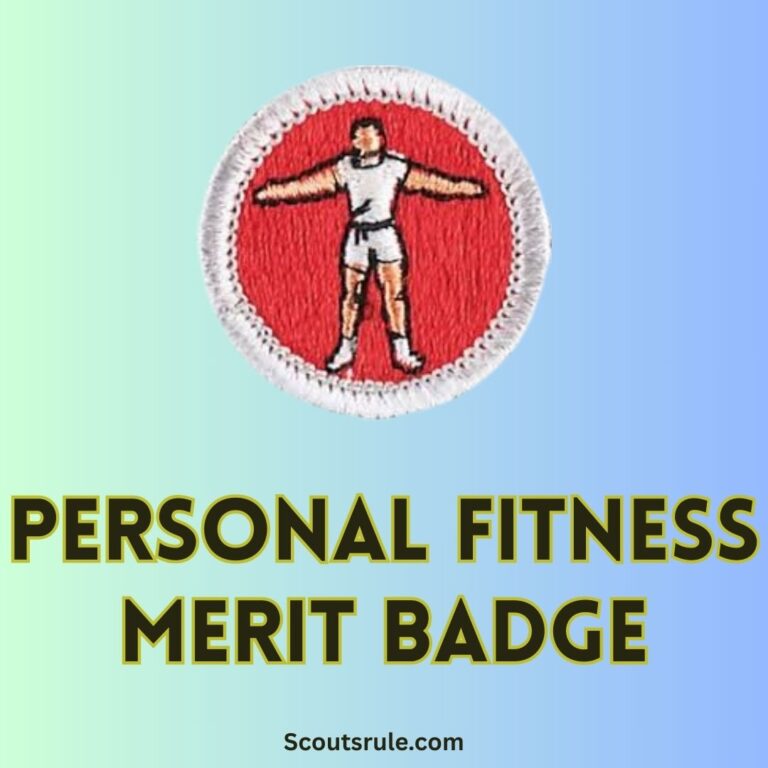
Home is more than just a shelter—it’s a sanctuary where families gather and memories are made. When wear and tear appear, knowing how to make basic repairs can transform a distressed spot into a place of comfort and functionality. The Home Repairs Merit Badge is not intended to turn Scouts into professional tradespeople overnight; rather, its goal is to instill a hands-on approach to solving common household problems, encourage attention to safety, and nurture a spirit of independence and creativity.
The badge covers a range of skills, from understanding household hazards and practicing safe tool usage to performing minor repairs in wood, electrical, plumbing, and cosmetic areas. Whether you’re weather-stripping a door, repairing a piece of furniture, or troubleshooting a flickering light, this merit badge provides you with the knowledge and experience needed to care for your home. By practicing these skills, you gain confidence that you can save money, help your family, and engage with the world of home improvement.
In the sections that follow, we’ll break down each requirement of the Home Repairs Merit Badge. We’ll explain the steps you need to take, suggest project ideas, and provide safety tips and best practices to ensure success. Let’s begin with the foundation of all good repairs—safety.
Post Contents
- 1. Safety—The First and Most Important Requirement
- 2. General Repairs
- Project Options:
- A. Maintaining or Reconditioning a Yard Tool
- B. Weather-Stripping a Window or Door
- C. Caulking Cracks or Joints
- D. Waterproofing a Basement
- E. Repairing a Break in a Concrete or Asphalt Surface
- F. Repairing the Screen in a Window or Door
- G. Replacing a Pane of Glass
- H. Soldering a Broken Wire or Metal Object
- Project Options:
- 3. Wood Repairs
- 4. Electrical Repairs
- 5. Plumbing Repairs
- 6. Appearance Repairs
- Additional Tips for Success
- Connecting to Future Opportunities
- Conclusion
1. Safety—The First and Most Important Requirement
When working on home repairs, safety is paramount. The very first requirement of this merit badge focuses on understanding and mitigating hazards that you may encounter. Mastery of safety practices not only protects you but also fosters the responsible use of tools and materials in any hands-on project.
A. Identifying Hazards
Before stepping into any repair project, you must be able to:
- Recognize physical hazards: These include sharp tools (saws, knives), heavy objects that may fall, and unstable structures.
- Understand chemical hazards: Many household products—paints, adhesives, solvents, and cleaning agents—contain chemicals that require careful handling. Knowing which chemicals are flammable or toxic is critical.
- Foresee environmental hazards: For outdoor repairs, weather conditions such as rain, wind, or extreme heat can create additional risks.
- Electrical hazards: When working on electrical repairs, the risk of shock or fire must never be underestimated. Understanding safe practices around electricity is non-negotiable.
B. Appropriate Safety Gear and Clothing
Each repair task has specific safety needs. You must be able to explain and use the following personal protective equipment (PPE):
- Eye Protection: Safety goggles or glasses to shield your eyes from debris or chemical splashes.
- Gloves: Durable, protective gloves (cut-resistant or chemical-resistant, depending on the task) to prevent cuts and chemical burns.
- Ear Protection: When using loud power tools, earmuffs or earplugs help prevent hearing loss.
- Proper Footwear: Steel-toed boots or sturdy work shoes protect your feet from falling objects or sharp items.
- Respiratory Protection: For tasks involving paint, dust, or fumes, a dust mask or respirator is recommended.
- Appropriate Clothing: Long-sleeved, durable clothing that minimizes exposure to potential hazards while providing mobility.
C. Ten Essential Safe Practices
In addition to the proper gear, every home repairer should follow these best practices:
- Read instructions: Always review the repair project plan and manufacturer’s instructions.
- Check tool condition: Ensure that tools are in good repair and free of defects.
- Keep the work area clear: A clutter-free area minimizes tripping hazards and accidental tool knocks.
- Secure your environment: Use clamps or supports to hold materials steady when working.
- Have a first aid kit nearby: Be prepared to manage any minor injuries quickly.
- Work in well-ventilated spaces: Proper ventilation is key when working with chemicals or in confined spaces.
- Double-check electrical outlets and circuits: Always cut power at the breaker box before beginning electrical repairs.
- Wear proper PPE: Do not compromise—use gloves, goggles, and masks as described.
- Use tools correctly: Follow proper techniques rather than improvising with tools.
- Keep a clear line of sight: Avoid operating power tools in crowded or obstructed areas.
Understanding and practicing these ten safe steps helps ensure that every repair project is undertaken with caution and respect for personal safety.
2. General Repairs
The second major section of the Home Repairs Merit Badge is focused on general home repairs. Under the supervision of your merit badge counselor, you are required to complete four out of a list of eight repair projects. These tasks are designed for Scouts to develop a broad understanding of basic maintenance skills, tool usage, and repair techniques.
Project Options:
A. Maintaining or Reconditioning a Yard Tool
- Objective: Choose a common yard tool (mower, rake, hedge trimmer, etc.) that shows signs of wear.
- Steps: Clean the tool thoroughly, sharpen blades if possible, oil any moving parts, and properly store it afterward.
- Benefit: This reinforces the importance of regular maintenance to extend the life of tools.
B. Weather-Stripping a Window or Door
- Objective: Improve energy efficiency by sealing gaps that let in drafts.
- Materials: Weather-stripping tape or a foam strip.
- Steps: Remove any old, deteriorated weather-stripping, cut new material to size, and apply it carefully around the window or door frame.
- Benefit: A well-sealed window or door reduces energy costs and improves comfort.
C. Caulking Cracks or Joints
- Objective: Protect against water damage and improve insulation by sealing gaps.
- Materials: Quality caulk and a caulking gun.
- Steps: Clean the area thoroughly, apply caulk in a steady bead along gaps or cracks, and smooth the bead with a caulking tool.
- Benefit: Proper caulking prevents leaks and makes your home more energy-efficient.
D. Waterproofing a Basement
- Objective: Prevent water damage and mold by ensuring your basement is well-protected.
- Materials: Waterproofing sealant, brushes, and possibly a sump pump.
- Steps: Inspect for cracks or leaks, repair these areas, and then apply a waterproof coating.
- Benefit: Protecting a basement from moisture helps maintain the home’s foundation and reduces costly repairs later.
E. Repairing a Break in a Concrete or Asphalt Surface
- Objective: Fix damage on driveways or walkways to prevent further deterioration.
- Materials: Concrete patch or asphalt repair kit.
- Steps: Remove loose debris, clean the area, apply the repair material, and smooth it to match the surrounding surface.
- Benefit: Regular maintenance of outdoor surfaces improves safety and prevents larger-scale repairs.
F. Repairing the Screen in a Window or Door
- Objective: Restore the functionality of screens to keep out insects while allowing fresh air.
- Materials: Replacement screen material, spline, and a spline roller.
- Steps: Remove the old screen and spline, cut new screen material to fit, secure it with the spline along the edges, and trim excess material.
- Benefit: Maintaining screens ensures your home remains comfortable and bug-free.
G. Replacing a Pane of Glass
- Objective: Practice precision and care by replacing broken or cracked glass.
- Materials: Replacement glass, glazing compound, and protective gloves.
- Steps: Remove the old glass (with caution), clean the frame, apply glazing compound, fit new glass in place, and secure it.
- Benefit: This task develops delicate handling skills and an understanding of window construction.
H. Soldering a Broken Wire or Metal Object
- Objective: Learn the technique of soldering to repair light fixtures, metal components, or small tools.
- Materials: Soldering iron, solder, safety glasses, and fire-resistant work surface.
- Steps: Clean the metal parts, clamp them securely, heat using the soldering iron, and apply solder to form a strong joint while following safety protocols.
- Benefit: Soldering builds a foundation in basic electrical repairs and metal work.
Each project encourages you to study the required techniques, utilize the correct tools, and learn from hands-on experience. Your merit badge counselor will evaluate your work based on your understanding, execution, and adherence to safety standards during the repair process.
3. Wood Repairs
Wood repairs focus on enhancing your ability to work with wooden items that form an integral part of the home. Under your counselor’s supervision, you are to complete three of the following projects. These projects emphasize craftsmanship, attention to detail, and familiarization with common woodworking tools and techniques.
Project Options:
A. Installing or Building Equipment for Storing Tools
- Objective: Build or install a storage solution that improves tool organization.
- Steps: Measure the space, choose appropriate materials (wood or metal), construct shelves, hooks, or cabinets, and secure them safely.
- Benefit: Well-organized tools improve productivity and safety in the work area.
B. Building a Workbench
- Objective: Construct a sturdy and functional workbench that will serve as your repair station.
- Materials: Lumber, screws, nails, and possibly a vise.
- Steps: Design the bench to fit your needs, cut the wood to size, assemble the frame, attach the work surface, and add finishing touches.
- Benefit: A personal workbench gives you a dedicated area for all your repairs and improvements.
C. Repairing a Piece of Furniture
- Objective: Fix a damaged item of furniture to restore its function and appearance.
- Steps: Identify the problem (loose joints, broken parts, or worn finish), disassemble if necessary, make the needed repairs using glue, screws, or nails, and refinish the piece.
- Benefit: This teaches valuable skills in carpentry, restoring items that might otherwise be discarded.
D. Painting or Varnishing a Piece of Furniture, a Door, or House Trim
- Objective: Refresh the look of a home feature with new paint or varnish.
- Materials: Sandpaper, painter’s tape, brushes or rollers, and the chosen finish.
- Steps: Prepare the surface by cleaning and sanding, mask off areas that should not be painted or varnished, apply the finish evenly, and allow proper drying time.
- Benefit: Revitalizing features through cosmetic repairs not only improves aesthetics but also protects the underlying material.
E. Repairing a Sagging Door or Gate
- Objective: Ensure proper alignment and functionality in everyday items.
- Steps: Examine the door or gate for structural issues, tighten or replace hinges, add shims if necessary, and adjust accordingly.
- Benefit: Properly functioning doors and gates enhance home security, usability, and overall appearance.
F. Repairing a Loose Step or Railing
- Objective: Fix loose steps or railings to improve safety and durability.
- Steps: Identify the loose components, secure them using brackets or additional fasteners, and test for stability.
- Benefit: Structural repairs like these prevent accidents and extend the lifespan of home features.
G. Repairing a Fence
- Objective: Maintain the integrity and look of your property’s fence.
- Steps: Check for broken or unstable boards, nails or screws that are loose, and weather damage. Replace or repair components as needed.
- Benefit: A well-maintained fence adds privacy, security, and curb appeal.
Each woodworking project requires careful measurements, precision, and patience. Whether you build something from scratch or repair an existing piece, you’re learning time-honored craftsmanship and the importance of upkeep.
4. Electrical Repairs
Electrical repairs present unique challenges and risks, and they must always be approached with caution. This portion of the Home Repairs Merit Badge is all about learning fundamental electrical concepts and carrying out minor repairs safely and effectively. Under your counselor’s supervision, you are required to complete two of the following projects.
Project Options:
A. Locating the Main Electrical Switch Box and Replacing a Fuse or Resetting a Circuit Breaker
- Objective: Gain familiarity with the electrical infrastructure of a home.
- Steps: Locate the main electrical panel, understand the layout of circuits, learn how to identify a tripped circuit breaker or blown fuse, and demonstrate resetting or replacing the components.
- Safety Note: Always turn off power and use insulated tools when working near electricity.
B. Replacing an Electrical Cord or Repairing a Plug or Lamp Socket
- Objective: Repair faulty electrical connections to ensure safe operation of appliances or fixtures.
- Materials: Replacement cords, electrical tape, and a screwdriver.
- Steps: Disconnect the device, remove the old cord or socket, attach the new components securely, and test the repair.
- Benefit: Learning to handle simple electrical fixes builds confidence and crucial troubleshooting skills.
C. Installing a Single-Pole Light Switch
- Objective: Understand how light switches control the electrical flow to fixtures.
- Materials: Single-pole light switch, wiring, and a screwdriver.
- Steps: Learn the wiring configuration, disconnect power, remove the existing switch, install the new one following proper wiring techniques, restore power, and verify that the switch functions properly.
- Benefit: This project introduces circuit control fundamentals and safe working practices with electrical systems.
D. Replacing an Electrical Wall Outlet
- Objective: Update or repair a wall outlet to restore electrical connectivity.
- Materials: Replacement outlet, screws, and a voltage tester.
- Steps: Safely switch off the power, remove the cover plate and outlet, disconnect and reconnect wiring to the new outlet, secure it in place, then test for proper function.
- Benefit: Through this activity, you learn the importance of electrical safety and gain hands-on experience with modern wiring systems.
Electrical repairs require meticulous adherence to safety protocols. Always consult with your counselor and, if necessary, a licensed electrician when working on tasks beyond your expertise.
5. Plumbing Repairs
Plumbing repairs may be less prevalent in day-to-day home maintenance than other repairs, but they are equally significant. Under the supervision of your merit badge counselor, you are required to complete two plumbing-related projects. Although these tasks may vary by region and home design, here are some common plumbing repair options that you might encounter.
Project Options:
A. Repairing a Leaky Faucet
- Objective: Understand the mechanisms behind faucets and learn how to stop a leak.
- Steps: Turn off the water supply, disassemble the faucet to access washers or cartridges, identify worn or damaged parts, and replace them. Reassemble the faucet and restore water flow.
- Benefit: This basic repair prevents water waste and helps develop fine motor skills.
B. Replacing a Broken Pipe or Fitting
- Objective: Address small leaks or damaged sections of plumbing.
- Steps: Identify the leak, cut out the damaged portion (if necessary), replace with a new section of pipe or fitting, and seal the joints with appropriate plumbing tape or sealant.
- Benefit: Gaining competence in repairing pipes leads to a better understanding of water flow and conservation.
C. Unclogging a Drain
- Objective: Solve one of the most common household issues—drain blockages.
- Methods: You may be required to use a plunger, drain snake, or even a chemical-free homemade solution such as baking soda and vinegar.
- Steps: Diagnose the clog, apply the chosen unclogging method, and test to ensure the water drains properly.
- Benefit: This task enhances problem-solving skills and emphasizes non-toxic home remedies for clog removal.
D. Replacing a Faucet Aerator or Supply Line
- Objective: Simple replacement tasks build your comfort level with disassembly and reassembly.
- Steps: Remove the old aerator or supply line, purchase a compatible replacement, and install it ensuring a secure fit.
- Benefit: Such repairs typically save water and improve the efficiency of faucets.
When carrying out plumbing repairs, always remember that water damage can be costly. Quick, efficient repairs not only preserve your home’s infrastructure but also instill an awareness of water conservation.
6. Appearance Repairs
The final category of the Home Repairs Merit Badge deals with appearance repairs. These repairs focus on improving the aesthetics and functionality of home components through painting, finishing, or minor structural fixes. Under the supervision of your counselor, you must complete two of the following appearance-related projects.
Project Options:
A. Repainting or Varnishing a Door, Piece of Furniture, or Trim
- Objective: Refresh and protect surfaces while developing an eye for design.
- Materials: Sandpaper, paint or varnish, brushes or rollers, painter’s tape.
- Steps: Prepare the surface by cleaning and sanding, mask off areas as needed, apply the new finish evenly, and allow adequate drying time.
- Benefit: High-quality finishing not only improves the home’s appearance but also provides a protective layer against wear and tear.
B. Repairing a Sagging or Damaged Surface Area
- Objective: Address cosmetic issues that may indicate underlying structural concerns.
- Steps: Inspect the area for sagging doors, gates, or loose steps; tighten or replace supporting hinges and brackets; and, if needed, repaint or refinish the repaired area.
- Benefit: Such repairs boost both aesthetics and safety, ensuring that the home remains both beautiful and functional.
Appearance repairs are an excellent way to combine technical ability with artistic flair. They help the homeowner maintain a pleasant living environment and give you a tangible way to see the fruits of your labor.
Additional Tips for Success
Planning and Preparation
- Review the Requirements: Before beginning any project, thoroughly review the Home Repairs Merit Badge requirements as listed by the Boy Scouts of America. Ensure you have a plan that covers all safety and procedural guidelines.
- Gather Necessary Tools and Materials: Make a checklist of required tools for each project. Standard tools might include hammers, screwdrivers, pliers, saws, caulking guns, and electrical testers. Ensure your work area is organized and that you have all safety equipment available.
- Consult Manuals and Online Resources: Websites like Scoutles.com and ScouterMom.com provide helpful tips, worksheets, and detailed guides on accomplishing each repair.
Working Under Supervision
- Follow Your Counselor’s Guidance: Always work under the close supervision of your merit badge counselor. Your counselor’s role is to ensure that safety protocols are followed and that you are learning correctly.
- Ask Questions: If you’re ever unsure about a repair process or a safety measure, ask for clarification. This proactive approach will improve your skills and ensure your projects are successful.
Safety Is Paramount
- Never Rush: Take your time during each repair. Rushing increases the risk of mistakes and injury.
- Double-Check Workmanship: After completing a repair, inspect your work to ensure that everything is secure and functioning correctly.
- Keep Learning: Home repairs are an evolving field. Maintain a attitude of continuous improvement and seek out additional learning opportunities—whether through online tutorials or community workshops.
Maintaining a Repair Log
- Document Your Projects: Keep a detailed log or notebook where you record the repairs you’ve performed. Include notes on what worked well and what could be improved next time.
- Photograph Your Progress: Taking pictures before, during, and after repairs can be a helpful record of your efforts and is a great way to reflect on your growth.
The Broader Impact of Home Repairs
- Building Life Skills: The skills you gain through this merit badge are applicable far beyond the realm of Scouting. Learning basic home repairs can save money, build confidence, and even help you manage your own home in the future.
- Environmental Awareness: Regular maintenance and repair of your home not only preserve its appearance and integrity but also reduce waste. Repairing instead of replacing items is more sustainable and environmentally friendly.
Connecting to Future Opportunities
While the Home Repairs Merit Badge is focused on the practical aspects of home maintenance, the skills you learn also have long-term implications:
- Career Exploration: Many tradespeople—carpenters, electricians, plumbers, and general contractors—develop their careers through early exposure to repair work. Learning these skills might spark an interest in a future career in one of these fields.
- Entrepreneurial Potential: The ability to fix things is a valuable skill in any entrepreneurial venture. Many small businesses start with a base of self-reliance and resourcefulness.
- Community Service: Once you master basic home repairs, you may volunteer your skills within your community. Whether it’s assisting an elderly neighbor or helping maintain community facilities, your work can have a positive, lasting impact.
Conclusion
The Home Repairs Merit Badge offers Scouts the chance to engage with real-world practical skills that extend well beyond the badge itself. Through hands-on projects ranging from general repairs and woodworking to electrical, plumbing, and aesthetic improvements, you will learn how to diagnose problems, select the appropriate tools and techniques, and execute repairs safely and effectively. The badge encourages a commitment to safety, an attention to detail, and a spirit of self-reliance that will serve you well throughout your life.
By working on these projects, you not only learn how to maintain your home but also gain the confidence to tackle problems independently, make informed decisions, and contribute positively to the household and community environment. With careful planning, adherence to safety protocols, and a willingness to learn and adapt, you can successfully complete the Home Repairs Merit Badge and demonstrate practical competency in home maintenance and repair.
Remember that every repaired door, fixed faucet, or reenergized light is a testament to your dedication, technical aptitude, and problem-solving capabilities. Keep a log of your projects, document the process, and reflect on what each task teaches you about the practical aspects of real-world home upkeep.
Embrace the challenges that come with each project, and let your growing skills guide you toward not only earning the badge but also developing lifelong abilities that will benefit you personally, academically, and professionally. Home repairs are more than just tasks—they are opportunities to build a foundation of knowledge, perseverance, and creativity that will last a lifetime

Hi, Robin here, A former lead Scout and here I share my inspiring stories about USA Scouts, leadership, adventure, how to guides and more.






